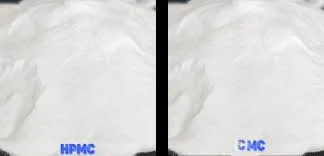
ነሐሴ . 16, 2024 14:14 Back to list
Latest Trends in HPMC Pricing and Market Insights for 2023
Understanding HPMC Prices Trends, Factors, and Forecasts
Hydroxypropyl Methylcellulose (HPMC) is a versatile cellulose ether widely used in various industries, including construction, pharmaceuticals, food, and personal care. Due to its unique properties such as water solubility, film-forming ability, and thickening characteristics, HPMC has become an essential ingredient in numerous applications. However, like many raw materials, the pricing of HPMC can be volatile, influenced by a combination of market demand, production costs, and global economic conditions.
Current Price Trends
Over the past few years, the price of HPMC has experienced fluctuations driven by several factors. In recent times, there has been an increase in demand for HPMC, particularly from the construction and pharmaceutical sectors. The resurgence of construction activities, especially in emerging economies, has contributed to an uptick in the need for HPMC as an additive in cement-based products, tile adhesives, and other construction materials.
Additionally, the COVID-19 pandemic has altered supply chains and affected production rates. Many manufacturers faced disruptions due to lockdown measures, labor shortages, and transportation constraints. As a result, prices have been impacted by both supply constraints and an increasing demand for hygiene products, where HPMC is utilized as a thickener and stabilizer.
Factors Influencing HPMC Prices
1. Raw Material Costs The production of HPMC relies on cellulose, which is derived from wood or cotton. Variations in the price of raw materials can significantly affect HPMC prices. Changes in logging regulations, natural disasters, or shifts in availability can lead to increased costs for producers.
2. Energy Prices Energy costs play a crucial role in the production of HPMC. Fluctuations in oil and gas prices can directly impact manufacturing costs, leading to changes in HPMC pricing. With the global movement towards renewable energy, these costs may see further variability.
hpmc price

3. Market Demand As industries evolve, so too does the demand for HPMC. For instance, the rise of the health and wellness trend has led to increased use of HPMC in food products and pharmaceuticals. This growing market has the potential to drive prices higher as manufacturers adjust to meet demand.
4. Regulatory Changes Environmental regulations and standards regarding chemical production can influence HPMC prices. Stricter regulations may lead to increased production costs for manufacturers, which could be passed on to consumers.
5. Geopolitical Factors Trade policies, tariffs, and geopolitical tensions can also affect HPMC pricing. For example, trade restrictions on certain raw materials or finished goods can lead to shortages, driving prices up.
Future Outlook
Looking ahead, the HPMC market is expected to grow, with continued demand anticipated from key sectors. Analysts predict that as construction markets stabilize and the global economy recovers from the effects of the pandemic, the demand for HPMC will also increase. However, manufacturers may continue to face challenges related to raw material costs and energy prices, which could keep price fluctuations a reality in the market.
Furthermore, technological advancements in production processes may provide opportunities for cost reductions, potentially stabilizing prices in the long run. Manufacturers who invest in sustainable practices and efficient production methods may gain a competitive edge by reducing their overall costs and passing savings onto consumers.
Conclusion
The pricing of HPMC is influenced by a complex interplay of factors including raw material costs, market demand, energy prices, regulatory changes, and geopolitical dynamics. While current trends show an upward movement in prices due to increased demand and supply chain challenges, the long-term outlook remains optimistic for both demand and potential price stabilization. Stakeholders in the industry must stay vigilant and adaptable, ensuring they can navigate the evolving landscape of HPMC pricing effectively.
-
tile-bonding-additives-for-stronger-bonds
NewsAug.22,2025
-
construction-grade-rdp-for-wholesale-needs
NewsAug.22,2025
-
trusted-wholesale-hec-partners
NewsAug.22,2025
-
hec-solutions-for-industrial-excellence
NewsAug.22,2025
-
construction-additives-need-hpmc-essentials
NewsAug.22,2025
-
hpmc-versatile-cellulose-ether-for-industries
NewsAug.22,2025







